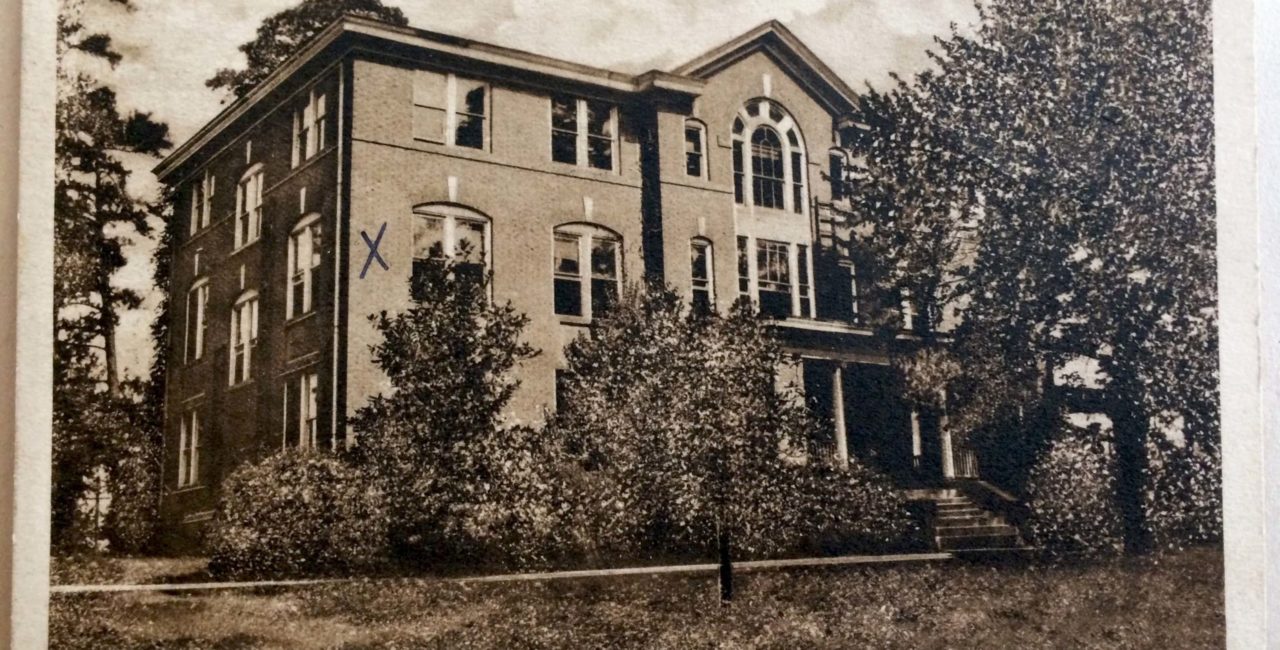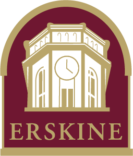
Cadet instructor remembers Erskine with affection
Retired Air Force Major John William Northrup recently sent a letter to the Advancement and Alumni office about how he became acquainted with Erskine during a World War II military training program brought to the campus early in 1943. He wrote, in part:
I am not an alumnus of Erskine, but my relationship goes back to the early days of WWII.
I enlisted in the Army Air Corps in July of 1942, age 19.
I was put into pilot training and shortly became an instructor pilot.
Stationed at Greenwood, S.C. instructing aviation cadets from Erskine. That is my connection.
I will be 100 in just a year and a half.
I am fond of my connection to Erskine.
Sincerely,
Jack Northrup, Major, USAF (Retired)
In A History of Erskine College, Professor Emeritus of History Dr. Lowry Ware recounts that once the Army Air Corps approved the campus for the military training program, “Robinson Hall on the women’s campus as well as the entire men’s campus was turned over to the Army Air Corps, which set up the 38th College Training Detachment (Air Crew) for the next full year.”
Erskine professors were employed in teaching the cadets such courses as physics, English, history, math, and geography. The college was also responsible for a physical training program under “Dode” Phillips and J.W. Beard. The Cadet School, as it became known, “began with a ‘permanent party’ of fifteen Air Corps personnel and 400 Air Crew men who came to the campus from basic training,” according to Ware.
Social and cultural activities on campus during the Cadet School mentioned in Ware’s account include the operation of a motion picture theater in the auditorium of the Erskine Building; a canteen in the basement of the building, with dances in the canteen as well as in McGee Gym; and the organization of cadet and field bands which, “along with a trio of Erskine women singers, broadcast programs on an Anderson radio station.” Some of the cadets participated in a cadet orchestra and performed for college and town events. A number of them even joined an Erskine choral group or the choir of the Due West ARP Church.
Ware observes that “Erskine and the Due West community gave the cadets a warm welcome.” Dr. R.C. Grier, president of the college, “sent the parents of the young men a post card, a personal touch which brought an appreciative response from families all over the nation.”
“By March 1, 1944,” Ware concludes, “when the last of the cadets completed their studies at Erskine, over 900 men had gone through the Erskine school.” The closing of the Cadet School signaled the end of a brief time of heightened patriotism in which young men from all over the United States, along with their military leaders, were introduced to Erskine and made their mark on the small community.
Pictured above is a postcard showing Wylie Home on the Erskine College campus. A message from a cadet to his parents in Pennsylvania is written on the other side and dated 1943.
